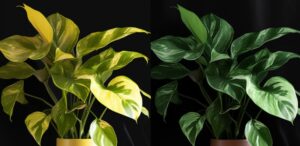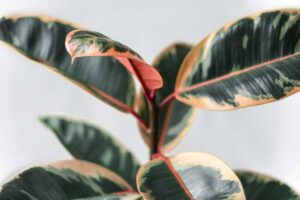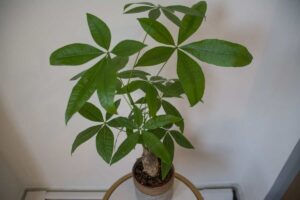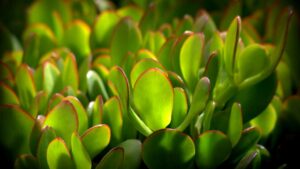Succulents are a great plant to cultivate in the home or garden. They are a diverse family of plants, characterized by thick and fleshy leaves that are engorged with moisture.
They are so easy to care for that they are almost foolproof making them a great choice for the novice gardener or plant owner to include in their collection.
So the last thing you expect when looking after succulents is to find that the beautiful leaves of these bold and striking plants show up ragged and nibbled. Snails are often the last thing on a succulent owner’s mind, but they are really bad for succulents.

In this article, we will explain why snails and succulents are a bad combination and what you can do if your pert and perky succulents are under fire from slimy snails!
Snails in your garden will want to eat your succulents
Succulents are an attractive meal for snails that will feed on the fleshy gelatinous leaves once their thick skin has been penetrated.
Low-growing, spreading plants are an easy meal, with even small snails able to devastate a large amount of succulent foliage in a single night.
If you have flourishing succulents, you will find that just about every snail or slug in your neighborhood will make a nocturnal beeline for your succulent patch, making it the local sacrificial plant. Succulents are not poisonous to snails so they will go ahead and feast.
And if you still have doubts, have a look at this video of an army of cheeky snails caught in the act of chomping down on succulent leaves (the damage is pretty bad):
Initially, snail damage may not be obvious but it can spread quickly
Any gardener will know just how efficient snails can be when it comes to their feeding. With a mouth that contains thousands of microscopic teeth, snails rasp through the succulent.
Snails will take advantage of the cooler evening and nighttime hours to feed on your jade plants, kalanchoe or hedgehog aloe.
Once they become active in the warmth of spring they will be looking for any herbaceous material to tuck into.
Though they are unlightly to introduce disease to the succulent plant, snail damage can become extensive and look really bad leaving fibrous patchy edges and areas.
Signs of snail and slug damage to succulent plants
Snails eat around 10% of their body weight daily, increasing the amount of the opportunity arises, for your succulent, this will show up in the form of scalloped edges on the succulent leaves.
Depending on the type of succulent targeted, there may be gnawned thumb-sized holds which look really unsightly.
Older damage that has healed may leave a scarred yellowed edge on the leaf.

Of course, you may also see the telltale silvery trails that the culprits leave when they make their escape, but is there are no other traces of a snail, it may be that the culprit is hiding underneath the leaves of the plant, ready to resume the banquet once it gets dark.
Thankfully you have a lot of strategies for stop them!
Once your local snails have gotten a taste for your succulents, they will return again and again. However, you have a lot of options for getting rid of snails and protecting your plants.
Aside from moving a potted succulent indoors, here are some effective solutions for snails on your succulent plants:
Search for the snails and physically remove them
It’s not for the squeamish, but you can impact snail numbers by simply plucking them off your plants in the evenings while they feed.
If you want to find them, be patient and wait until it’s dark, heading out with a flashlight and a buck of soapy water to drop them in.
Create a physical deterrent
If the sails are determined to eat your succulents, you can make it hard for them by using physical deterrents that make it very uncomfortable to access the plant. Try these cheap, simple and effective solutions:
- Crushed eggshells are a nightmare to snails, who will be deterred by their jagged edges
- Coffee grounds are also effective for deterring snails when sprinkled liberally around the succulents.
- Copper is also an effective deterrent which sends a sharp electric current into the snail if it comes into contact with it.
- Diatomaceous earth will dehydrate and lacerate the soft bodies of snails, killing them. This powder can be sprinked arround the base of the plant.
Biological options for snail control
Get nature to fight for your succulents with these biological options:
- Attract birds to your garden and they will make short work of any lurking snails.
- Nematodes are parasitic woms that can infect and kill snails quickly. They can be purchase online or form garden centers and introduced into the soil around the succulentes.
- Predatory snail species like the decollate snail can be purchased and released near your succulents to hunt and eat any nearby snails.
Chemicals can also protect your succulents
If snails are still breaking through the biological control, you may want to consider using chemicals. Ideally, limit the use of these chemicals to the vicinity of your succulents so they cannot harm other wildlife.
Sluggo is a well-known bait for snails and slugs that contains iron phosphate as its active ingredient. Put this bait down near your succulents and it will kill the gastropod without harming other garden visitors. The unused bait also degrades completely.
Rounding up
Because succulents are so low maintenance, it’s easy to forget that they can become the prey of a variety of pests.
If you are losing the battle against slugs and snails that are partial to your succulents, you may want to repot your favorite in pots and keep them out of harm’s way.
Unfortunately, snails aren’t the only succulent pests, so keep a close eye on your plants for sap-suckers like aphids, thrips, weevils, and mites, especially during the summer months!
- Philodendron Moonlight Vs. Golden Goddess
- How to Revive Your Rubber Plant: 6 Tips to Help Your Rubber Tree Thrive Again
- Your Money Tree Lost All Its Leaves – Will It Sprout Again?
- Why Is My Money Tree Dying? 5 Possible Reasons and Solutions
- Do Jade Plants Bloom – Fact or Fiction?
- Plants with Heart Shaped Leaves (Secret Language of Leaves)








